Premium Only Content
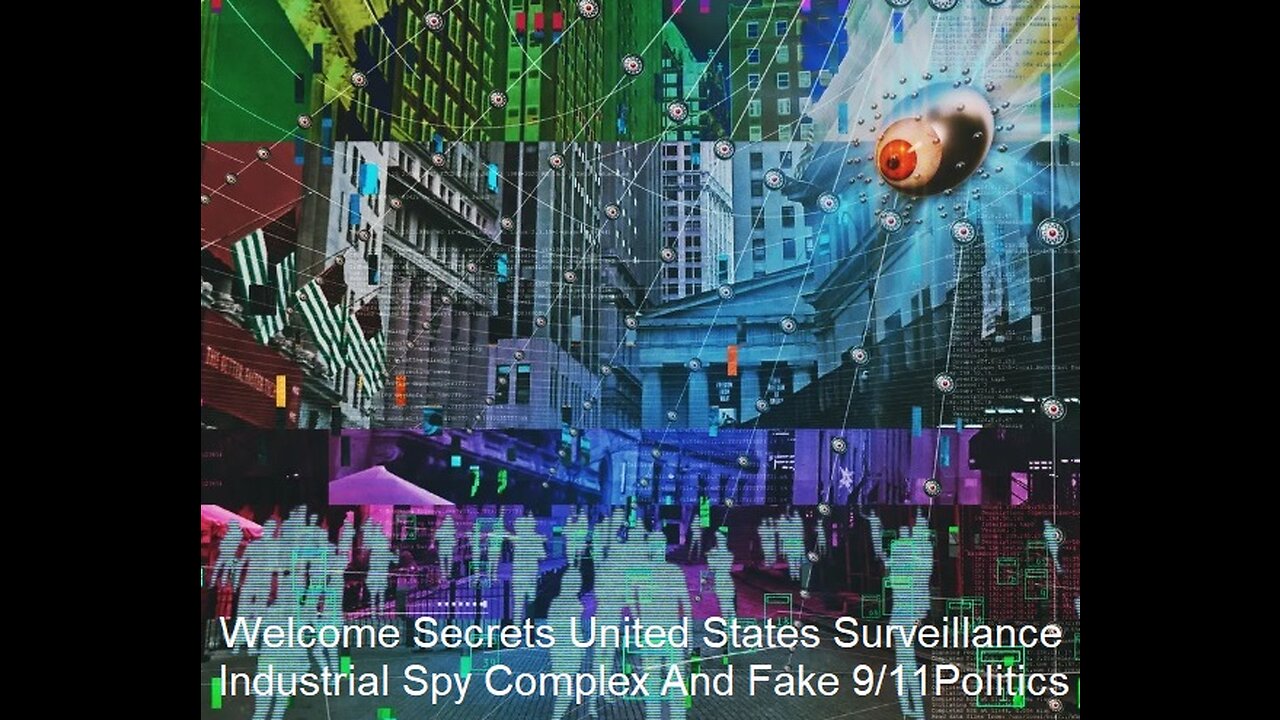
Welcome To Secrets United States Surveillance Industrial Spy Complex 9/11 Politics
Central Intelligence Agency has been carrying out a mass surveillance program on American soil and in the U.S. with minimal oversight and the program’s uncovering is bad news for Big Tech according to documents declassified at the request of two U.S. senators. A Chinese Foreign Ministry spokesman appeared to claim the 9/11 attacks on America were an “inside job” by the US government in a tweet on Tuesday. Washington Examiner report that the Chinese Embassy did not respond to requests asking what the Chinese position is toward possible U.S. government involvement in the 9/11 attacks.
Zhao is one of the main proponents of what is known as “wolf warrior diplomacy,” referring to a “jingoistic Chinese film franchise,” according to the Brookings Institution. This style of diplomacy features aggressive and controversial rhetoric from Chinese diplomats, frequently utilizing conspiracy theories to place blame on and troll Western governments.
These diplomats make especially effective use of Twitter, Zhao’s main outlet. The Brookings Institution documented this sudden shift as starting in 2020. Previously, China’s use of the social media platform was limited to a few isolated embassies. By the end of 2020, however, the Chinese presence on Twitter had quadrupled, with 170 different Chinese diplomats frequently bickering with Western governments, particularly regarding COVID-19, foreign policy, and race relations.
Zhao’s Twitter feed is filled with accusations of U.S. war crimes and abuses, revolving around Western governments and allies, support for Russia, frequent criticism of Japan, and denunciations of Taiwanese sovereignty. The top diplomat has gotten into several previous high-profile squabbles with U.S. officials, such as an incident in 2019 in which former national security adviser Susan Rice called him a “racist disgrace” in response to tweets talking about race relations in Washington, D.C. U.S.A.
Why was 9/11 an inside job?
The MIT report is by far much more thorough and comprehensive than the NIST report. They make a compelling argument. But all the MIT claims require the temperature of the steel to reach at least 600° C. NIST determined that there was no evidence that any of the samples had reached temperatures above 600 ºC.
All the MIT collapse theories require these temperatures to be viable. “At any given location, the duration of air, not steel temperatures near 1,000 C was about 15 min to 20 min. The rest of the time, the calculated temperatures were near 500 C or below.” (NIST, 2005, p. 127, Temp.) NIST contracted with Underwriters Laboratories, Inc. to conduct tests to obtain information on the fire endurance of trusses like those in the WTC towers… All four test specimens sustained the maximum design load for approximately 2 hours without collapsing.” NIST, 2005, p. 140,”
Kevin Ryan, at the time a manager at Underwriters Laboratories (UL), makes a point of the non-collapse of actual WTC-based models in his letter to Frank Gayle of NIST:
“As I'm sure you know, the company I work for certified the steel components used in the construction of the WTC buildings. In requesting information from both our CEO and Fire Protection business manager last year… they suggested we all be patient and understand that UL was working with your team… I'm aware of UL's attempts to help, including performing tests on models of the floor assemblies. But the results of these tests… indicate that the buildings should have easily withstood the thermal stress caused by… burning [jet fuel, paper, etc.]. (Ryan, 2004)
That models of WTC trusses at Underwriter Laboratories (UL) subjected to fires did NOT fail is also admitted in the final NIST report: NIST contracted with Underwriters Laboratories, Inc. to conduct tests to obtain information on the fire endurance of trusses like those in the WTC towers…. All four test specimens sustained the maximum design load for approximately 2 hours without collapsing… The Investigation Team was cautious about using these results directly in the formulation of collapse hypotheses. In addition to the scaling issues raised by the test results, the fires in the towers on September 11, and the resulting exposure of the floor systems, were substantially different from the conditions in the test furnaces.
Nonetheless, the empirical test results established that this type of assembly was capable of sustaining a large gravity load, without collapsing, for a substantial period of time relative to the duration of the fires in any given location on September 11. (NIST, 2005, p. 141; Temp.)”
There is still no explanation of the initial collapse. Still inconsistencies in expert opinion and still no clear consensus as to the initial collapse model.
An article in the journal New Civil Engineering (NCE) lends support to concerns about the NIST analysis of the WTC collapses. It states: World Trade Center disaster investigators [at NIST] are refusing to show computer visualizations of the collapse of the Twin Towers despite calls from leading structural and fire engineers, NCE has learned. Visualizations of collapse mechanisms are routinely used to validate the type of finite element analysis model used by the [NIST] investigators. The collapse mechanism and the role played by the hat truss at the top of the tower has been the focus of debate since the US National Institute of Standards & Technology (NIST) published its findings…. University of Manchester [U.K.] professor of structural engineering Colin Bailey said here was a lot to be gained from visualizing the structural response.
“NIST should really show the visualizations; otherwise the opportunity to correlate them back to the video evidence and identify any errors in the modeling will be lost,” he said…. A leading US structural engineer said NIST had obviously devoted enormous resources to the development of the impact and fire models. “By comparison the global structural model is not as sophisticated,” he said. “The software used [by NIST] has been pushed to new limits, and there have been a lot of simplifications, extrapolations and judgment calls.” (Parker, 2005; Temp.)
Bottom Line: Fire is not a plausible explanation. Its just not. Same with WTC 7… Let's go with the official theory and say the fire weakened a few floors all within a 1–2 hours compromising 50% of the steels strength on the floors in question. Ok, so let's say these few floors all collapse at the same time with, an approximate 45–50k tons of floors above them.
What happens? Seriously, play it out in your head. You dont have to be a physicist here…
So the metal framing bends on the given floors or lets say it even it manages to break simultaneously in every location bearing weight (we know this didn't and can't happen… although it does in controlled demos). Ok, so then what??
Those floors collapse on themselves and the floors weight bearing trusses and girders all fail. THATS ALL THAT HAPPENS. NOTHING ELSE HAPPENS IN REAL LIFE. THE REMAINING FLOORS WERE NOT COMPROMISED BELOW OR ABOVE.
The only time a steel super-structure disintegrates (The portion above and below the small area the plane hit the WTC for example…) is when it is demolished. Fire or even collapse wont pulverize hundreds of steel floors. It just won't.
This is so blatantly obvious. The remaining super structure was intact. A few floors simultaneously collapsing and failing due to heat is not enough to compromise the rest of the super reinforced steel structure below. And I'm BEING GENEROUS by conceding that even happened!
Even if there were 100 tons above it, IT WOULDN'T IMPLODE ON ITSELF, PULVERIZING THE ENTIRE STRUCTURE AND ELIMINATING THE CORE BEAMS, LET ALONE have PREVENTED THEM FROM SUPPORTING WHAT THEY WERE DESIGNED AND ENGINEERED TO SUPPORT.
Think about it. There is no way an asymmetrical plane crash that weakened and heated beams in an asymmetrical fashion WOULD or COULD PRODUCE A FULLY SYMMETRICAL TOTAL GLOBAL FAILURE ON ALL FLOORS
Were the passengers on the 9/11 planes killed instantly? Wow, thanks for all the upvotes, views, and comments. BTW, if you do not care to hear a graphic description of what happened then do not read below the line below. The short answer is, the passengers died instantly.
I originally studied this subject to understand what planes hitting the buildings should look like in order to debunk certain conspiracy theories about the planes. The conclusion for that was the planes hitting the sides of those buildings looked as expected. That does not disprove the other conspiracy theories.
Yes, the passengers never even felt the bump of the plane hitting the building before they were dead. They probably experienced the collision as hearing a pop and then nothing. The entire body of a 767 jet traveling at 500 knots passes by a point in space in about a 5th of a second. Your body is moving through space much faster than pain moves through your nervous system (257 m/s vs .61 m/s). The elastic shock wave passing back through the fuselage of the jet caused by the impact with the building does not have time to reach the passengers before they are already dead and sailing through the inside of the building after being ground into little pieces by the steel frame of the building.
Physicists call this an inelastic collision. Everything crumples like the bumper of a car nothing bounces. The physics of where all the inertial energy of the plane goes is actually very complicated. Destruction of the side of the building uses some of it. Destruction of the interior part of the building uses some of it. Crumpling and destruction of the plane itself. There is noise and heat accounting for some energy. The sudden negative acceleration the stopping would cause people in the planes to die instantly.
There are some calculations on g-forces near the bottom of this post. The summary is that a best-case scenario generates a minimum of 120 gs during the crash. 50 gs kills instantly. A car hitting a wall at 85 mph produces 30 gs. In the best case scenario, a body experiences a constant 120 gs during the crash into the building. In this case, the crumpling body of the plane acts as a kind of spring across the interior of the building. Most bodies experienced many 100s if not 1000s of gs. Everyone died instantly. Surprisingly, if a body ejected from the plane does not decelerate until it hits the atmosphere and is headed out the other side of the building, the person dies instantly anyway due to the air drag causing an instantaneous 700 gs of deceleration.
To think about it another way, the airbags in the seats never deployed because the impact never reached them. The impact shock wave cannot propagate faster back through the metal fuselage than the plane is moving into the building. Passenger’s bodies did not begin to decelerate before they were already inside the building in pieces. Passengers didn’t feel a thing before dying instantly. Oddly, most of the passengers would hear a noise just before dying as the ear only needs 25 milliseconds to hear.
Another way to think of these planes is as bullets which make a small hole going in and a big hole coming out.
Update based on comments: Yes, some airplanes have airbags. Some have them only in business class or first class. Airplane airbags.
Does the propagation of the impact shock wave propagate at the speed of sound? There is an acoustic wave that propagates backward through the fuselage but that is not the wave we are interested in. It is an elastic wave traveling back through the airframe that is important. The two waves travel at different speeds depending on the material. This elastic wave has to do with stiffness, shear of the metal parts and their ability to spring back to their original shape.
Understanding deceleration during a crash. Imagine a car hitting a power pole. The car frame and bumper are not stiff. At 60 miles an hour, the bumper hits the pole and stops but the car behind the bumper is still moving at 60 miles an hour. The pole begins to intrude into the hood and yet most of the mass of mass of the car is in front of the pole and Still moving at 60 miles per hour. We are now 30 milliseconds into the crash. Now as the engine hits the pole, a significant amount of energy is absorbed and the stiffness of the frame is enough to slow down the remaining mass. At 40 milliseconds the remaining car in front of the pole is going to stop. Deformation of the car's frame absorbs most of the remaining energy of the crash. This deformation travels as a shockwave backward through the car. This shockwave travels backward quickly but not instantaneously.
If the car was moving faster, the pole intrudes further. If the car is traveling fast enough, say 200 MPH, the frame is never able to absorb enough energy to stop the car and the pole splits the entire car into two halves which continue in the direction they were traveling. I actually witnessed such a car crash.
Regarding seeing the collision. Yes, it is possible. There is some disagreement on how fast the human brain can see. Wikipedia claims it takes the human brain 200 milliseconds to see light coming into the eye. This would probably be too slow. People in the back who happen to be looking forward toward the front of the plane might be able to see but perhaps not understand that something was happening.
Regarding what happens to someone if they did feel the deceleration. According to the NTSB, the aircraft were traveling at 510 knots and 430 knots. So this is 257 m/s and 221 m/s respectively. The terminal velocity of a human body through the air is 53 m/s. As a person who has been around a few rock climbing fatalities, I can tell you what 53 m/s does to a person’s body. I was also in Yosemite to see the result of a couple that jumped off the top of Yosemite Falls in a double suicide. There is an old saying among rock climbers: It’s not the fall, it’s the sudden stop that kills you. The sudden deceleration at 53 meters per second splatters a body into many pieces which have to be picked up by the “baggy brigade”. The bodies in the airplanes were traveling 4–5 times faster than that.
We can roughly calculate the g-forces on a body. A human body is known to survive 25 gs over 1.1 seconds with severe injuries. A bad car crash at 85 mph generates 30 gs. over .05 seconds. 50 gs is guaranteed instant death. Let’s assume the best case scenario for a body that stops slowly across the width of the tower without hitting any steel. The plane crumpling and the building crumpling provide a constant deceleration like a spring. Would the g-forces be fatal? Oh yes, We have:
(0 m/s - 275 m/s) / (65 m / 275 m/s) =1200 m/sec^2 - gs = 1200/9.8 = 122 gs
So the best case is that a body undergoes constant 120 gs when 50 gs kills instantly.
Let’s suppose the unlikely case where a body flies all the way through the building without hitting anything and out the other side. What is the maximum g’s experienced in that case?
The air drag coefficient on a sitting body is about .75. The body is going to decelerate from 274 m/s to the terminal velocity of the human body which is 53 m/s. What are the maximum g-forces involved in this scenario? The average American weights 80 kg. The drag equation is:
D = Cd * A * .5 * r * V^2
Cd = the drag coefficient which we are taking as a seated person at .75. We estimate A the area at 1.7 m^2. The density r of air is about 1.2 kg/m^3 and we have the velocity V=275 m/s.
D=.75 * 1.7*.5*1.2*275^2=57853 newtons
Since F=ma we can calculate the acceleration for an 80 kg body caused by the Drag which comes to a = 57853/80 which is about 723 gs.
Obviously, the velocity of the jet at 275 ms or 500 knots is squared. That is the real estimate here. The drag decreases very quickly but the person is already dead. The highest g-force ever survived was an instantaneous 48.5 gs followed by 25 gs for 1.1 seconds. The lesson is, don’t jump out of a jet. The air might as well be a concrete wall.
Can someone prove to me that 9/11 was or wasn't an inside job?
To directly answer your question: Yes, but that’s a bit pedantic, as I do not know who that person would be. From here, I can’t prove anything, but I can point to places where, demonstrably, people have shown that key elements of the official narrative, or prominent counter-theories to debunk questions of the official narrative, are just wrong.
My leaning toward allowing the possibility that it was “an inside job” is simply that there are incontrovertibly incorrect facts accepted as truth in the official narratives, the presence of which:
Means that someone is willfully lying, or
Someone does not actually know the facts, but is repeating something they were told, who was willfully lying, or That the people who investigated didn’t do a very good job of it, or The people who investigated it were thwarted from doing a very good job by parties who were not interested in a complete, thorough investigation.
I tend to look at it holistically, which is to look at a lot of circumstantial things, in order to be able to allow the possibility to exist. I won’t bother getting into motive, nor even who might have done it.
Here’s the circumstantial, wholistic stuff: I happen to be someone who could believe that their own government would kill its own people to further an agenda. We see this happen throughout history, and throughout the world now. This was literally the original premise of the film The Princess Bride.
The alleged perpetrator (UBL, et al) was previously presumed responsible for a number of other attacks against American facilities abroad. Nearly all of those attacks were carried out by driving an explosives-laden vehicle into the target. This methodology does not portend a particularly sophisticated ability to project force.
This is particularly strange given that AQ/UBL, just eleven months prior to 9/11, carried out an attack (on the USS Cole, October 12, 2000) as sophisticated as driving a boat into the side of another boat and setting off explosives. Did they not have the idea for 9/11 yet? Did they really plan it all and get everything in place in less than a year? If it took longer than a year, why bother bombing a ship when it would invite a lot of attention when you don’t want it?
How did AQ go from crash-go-boom to successfully hijacking four commercial airliners on US soil (while bypassing the legendary US air defenses), and successfully bringing down three skyscrapers (using only two airplanes) in just eleven months?
Given that three buildings collapsed into their own footprints, a feat that has never been repeated prior or since, and it “appeared very much like a controlled demolition”, why were there no elements to the investigation to see if someone actually had accessed the building and, in addition to airplanes, used explosives? It could have been AQ themselves— and it sounds like a thing you’d want to know. Surely, that sounds like more of a long-shot, but if you’re about to launch a six-trillion (and counting) dollar campaign for the very, very vague purpose of “stopping terrorism”, it seems like something that might be investigated thoroughly.
A large part of the 9/11 narrative is the experience of the passengers on-board the flights, which were supposedly conveyed via phone calls from the planes. That, on its face, is very odd— that the villains in this case would encourage people to make phone calls. But, allowing that, part of the narrative is that people used both on-board Airphones, and personal cell phones. This detail (cellphones), while it could have been mistaken, is the only thing that might allow for the number of phone calls that were made, given that the Airphones at the time (which may have been installed in the 90s) did not have enough bandwidth to make very many simultaneous calls. However, making a cell phone call from an airplane is impossible without on-board hardware to relay that call in a manner similar to an Airphone. The reason that a cell phone call is impossible to make from a moving jetliner is actually not the altitude (or distance to the towers, though that’s a factor)— it’s that the plane is moving so quickly, the handset itself would have to be constantly “handing off” from tower to tower as it roamed, the process of which takes enough time that it would completely prevent a call from being completed at all, let alone any conversation to take place. I can readily see someone inventing this detail (about cell phones) because they didn’t sufficiently understand the technology involved.
Despite contradicting narrative elements regarding the causes of the collapse of the buildings, no significant regulatory response was offered as a way to prevent such future collapses. Indeed, the competing narratives are: 1) Jet fuel caused a fire so hot, the steel melted, which is countered with the raw “bit of info” that jet fuel, on its own, can not cause steel to melt— not by a long shot in terms of required temperatures, 2) It wasn’t the jet fuel— the jet fuel, by and large, was consumed in a fireball on initial impact. It was the fire of the items within the building itself that caused the steel to melt and collapse (I think this was actually the official reason given in the commission report).
The problem with #1 is that a third building at World Trade collapsed later in the day— it was World Trade #7, which was not hit by an airplane, though was seen later in the day to be on fire, internally, with no ready explanation. This building collapsed in the evening, in the same way. This is such a focus of conspiracy theorists that the mere mention of “Building 7” is a cat whistle now. The collapse of this building, though, given its relative lack of proximity to the other two, is very problematic.
The problem with #2 (which would explain the third building) is that there was no massive response to changing out materials we make things out of in high-rise buildings.
If the aim was to prevent further acts of terrorism, it seems that all the changes made were solely to prevent another airplane-based attack, as airport security (previously handled by contractors and paid for by the airlines) was switched to the TSA, however it’s been demonstrated over and over again that, when tested, the TSA misses contraband items a whopping 95% of the time. To me, that doesn’t sound like an organization run by anyone who believes there’s a real problem. Additionally, other modes of mass transit were unaffected: indeed, three years later, I was able to carry an 80-pound duffel bag from the street directly onto a passenger train, only having to present my ticket. For the reaction we took as a nation to 9/11, launching endless war that’s spread to seven or eight countries now, it seems like safety wasn’t really the interesting bit.
Not intending to name names, but I will say that a number of people who had dreams of starting such wars, going back decades, got incredibly lucky that day, in terms of getting to do what they wanted to do. And those people were in a position to manufacture their own luck. So, can it be proved? No. Was it sufficiently investigated? Obviously not.
BBC reported the collapse of World Trade Center Building 7 before it actually occurred. The network relied on an incorrect report from Reuters.
A group of engineers and architects is demanding the American National Institute of Standards and Technology (NIST) retract and correct a 2008 report that concluded one of three World Trade Center buildings collapsed because fire weakened the steel supporting it in the 9/11 terrorist attacks.
The Architects & Engineers for 9/11 Truth (AE911T) has formally filed a Request for Correction with the NIST following a new and detailed four-year analysis by a team at the University of Alaska Fairbanks (UAF).
It says the World Trade Center (WTC) building 7 collapse was a “near-simultaneous failure of every column in the building” and dismissed the NIST finding that heat from the fire caused beams to “walk off” their moorings.
Sept. 11, 2001 is the tragedy of when two hijacked planes hit the WTC 1 and WTC 2 towers sending debris tumbling onto WTC 7. The NIST claimed that embers ignited a fire which then caused the 47-storey building to collapse on itself at 5:20 p.m., hours after the initial incident that morning.
“We have filed a request for correction because the NIST report is wrong,” says Ted Walter, spokesperson for AE911T, which is a group of 3,000 engineers, scientists and architects, including more than a dozen Canadians ones, that paid US$316,000 for the study.
“From an engineering perspective it is imperative to understand how and why this building came down under design load conditions,” said Walter.
The study says NIST made some fundamental errors in how engineers estimated the rigidity of the outside building frame and that the heat generated by the fire did not trigger “thermal movements” at a critical base plate support.
Further, the group, which includes families of those killed, asserts that the investigation is flawed and that the conclusions as to what happened must be based on “science and engineering” and accept that controlled demolition is a plausible cause.
For expediency and because it was not hit by a plane, the study looked only at WTC 7 not the other two but AE911T has long claimed all three were subject to something beyond heat induced failure.
“The report notes that the outside frame was more flexible than the inside framing which is where the elevator shafts were,” says McMaster University professor emeritus of civil engineering, Robert Korol, a fellow of the Canadian Society of Civil Engineering who is also one of two peers who reviewed the UAF study.
“Under the conditions described, the displacement of the outside steel would have been only one inch, not the 6.25 NIST claimed and not enough to cause failure.”
Further, he says, the debris from WTC 1 which fell 943 feet to WTC 7 did not attain sufficient mass to cause structural damage to the steel in that building.
The bottom line, he says, is that the NIST report is flawed and of no value to future engineering or architectural learning.
The Alaska report adds new momentum to long standing claims by the AE911T that all three of the buildings should not have collapsed in the spectacular and deadly manner they did. Further, and Korol underlines this, there was nothing in the offices beyond basic desks, chairs, computers and paper that would be of such a combustible nature so as to feed a fire and raise the temperature to above 1,400 degrees Celsius and melt the steel structure.
“We don’t even know if the steel was fireproofed,” says Korol.
The group makes no assertion as to why it may have been a “controlled demolition” and says its only interest is in ensuring that there’s no need to rethink the structural steel design of high-rises because the design was not at fault.
UAF civil engineering professor Leroy Hulsey, principal investigator, his research assistants, Feng Xiao, now an associate professor at Nanjing University of Science and Technology and Zhili Quan, now a bridge engineer for the South Carolina Department of Transportation, found that the design standard of the building was not exceeded by the fire and that simultaneous and controlled demolition caused the structural steel to fail.
“Fires could not have caused weakening of displacement of structural members capable of initiating any of the hypothetical local failures alleged to have triggered the total collapse of the building,” the report states. “Nor could any local failures, even if they had occurred, have triggered a sequence of failures that would have resulted in the observed total collapse.”
The NIST report held that lateral support beams buckled because of thermal expansion from the fire and because they had “nowhere to go” and thus deformed and weakened the structural integrity. Other failures were triggered when joists and beams “walked off” their connections, NIST found.
It was also the first NIST finding of a highrise collapse from thermal deformation caused by fire which the 125-page Alaska report disputes.
It presents arguments showing it was a simultaneous global failure not a localized failure causing a domino effect.
Hulsey et al argue that the collapse was straight down in a pancake fashion with about 2.25 to 2.5 seconds for free fall acceleration.
“In a typical building collapse (given a localized structural steel failure) WTC 7 would be expected to experience a combination of axial rotation and bending of members, resulting in a disjointed, asymmetrical collapse at less than free-fall acceleration,” the report states.
The study team undertook extensive computer and physical modelling, paying particular attention to the area around Column 79 which had been identified as the critical juncture of failure.
Their conclusion is that Columns 79, 80, and 81 did not fail at the lower floors of the building and were not subjected to heat above floor 30 because there were no fires there.
Even if they did, they would not trigger a horizontal progression of core column failures and the team was unable to find any other plausible cause for the progressive sequence of failures.
SEPT. 09 /11 2001 - FALSE FLAG CONSPIRACY - FINALLY SOLVED NAMES, CONNECTIONS, MOTIVES
On Sept. 11, 2001, terrorists attacked the United States and killed almost 3,000 innocent people. A terse and information packed summary of exactly who was involved in the 9-11 2001 attacks, what they did, and what motivated them. Truly an amazing piece of research, the result of monumental effort on the part of investigators who just wouldn't let it go.
The first 9/11 conspiracy theories appeared on the internet just hours after the attacks, on 11 September 2001, and with the rise of social media, have grown in scope and scale ever since.
Extensive reports by the 9/11 Commission, US government agencies and expert groups have refuted the existence of any hidden conspiracy.
But activist groups in the US and elsewhere, the 9/11 Truth movement, say the facts have been hidden.
Some leading members of the movement have also embraced conspiracies about Covid-19 and vaccines.
And some senior politicians, celebrities and media figures have also disputed the official account.
'World government'
The rise of new conspiracy movements online, such as QAnon, whose followers, among other conspiratorial views, believe a US "deep state" responsible for the attacks, has kept these conspiracy theories in circulation and brought them to a far larger audience.
And online clips from a series of films known as Loose Change have reinforced many of the falsehoods circulating.
Some claim the US government staged the attacks or knew of them in advance and allowed them.
And these falsehoods mesh with more recent online movements' belief global elites plan to curtail civil liberties in response to the attacks and facilitate the establishment of an authoritarian world government. A claim widely shared online, "Jet fuel cannot melt steel beams," suggests the World Trade Center's Twin Towers were demolished by explosives.
But according to an official report, the crashed planes considerably damaged support columns of both the towers and dislodged fire-proofing.
Additionally, the fires reached up to 1,000C in some areas, causing the steel beams to warp and the eventual collapse of the buildings.
Uncontrolled fires
The collapse of 7 World Trade Center, a 47-storey skyscraper in the vicinity of the Twin Towers, has attracted many conspiracy theories, some of which were trending on major social networks on last year's 9/11 anniversary.
This building - containing offices of the CIA, the Department of Defense, and the Office of Emergency Management - collapsed hours after the Twin Towers without being hit by a plane or directly targeted and evolution of 9/11 conspiracy theories.
Panic made us vulnerable’: how 9/11 made the US surveillance state – and the Americans who fought back on the morning of 11 September 2001, an 18-year-old was driving his white Honda Civic on the way to work as a freelance web designer. It was a beautiful day under a sparkling blue sky, and as he sped down Maryland’s Route 32 with the window down and radio blasting, the teenager was sure it was going to be a lucky day.
Soon after 8.46am the radio cut to news that a plane had crashed into one of the Twin Towers in New York City. At 9.03am, by now at his desk, he was stunned to hear that a second plane had crashed into the other tower, followed half an hour later by similar catastrophe at the Pentagon in Washington.
Edward Snowden remains in exile in Russia.
Edward Snowden: 'The people are still powerless, but now they're aware'
He leapt back into his car and screeched into reverse, only to find himself stuck in gridlocked traffic sandwiched between hundreds of other vehicles. He was stuck outside the headquarters of the National Security Agency (NSA), the US intelligence body that runs one of the largest surveillance operations in the world.
The road was jammed with personnel streaming out of the NSA building following an order to evacuate. The air was thick with the sound of yelling, cellphones ringing, car engines revving vainly in the stationary traffic.
The surreal spectacle of thousands of NSA intelligence agents abandoning their posts after the worst terrorist attack on the US, only to be bogged down in gridlock, made a deep impression on the teenager, Edward Snowden. As did 9/11 itself, which radically changed the course of his life.
In its wake, Snowden became caught up in the surge of patriotism that swept the nation. Inspired to play his part, he joined the army, entered the intelligence community, and some 12 years after 9/11 found himself back at the same NSA where he had ground to a halt on that fateful day.
The attacks on the Twin Towers and Pentagon had brought Snowden deep into the heart of America’s secretive surveillance operations. But in the process it had given him access to highly classified databases that revealed to him a massive secret world, a sort of hidden state-within-the-state that had been created in the wake of 9/11.
Snowden would go on to carry out the largest intelligence leak in the NSA’s history. It would expose one of the great legacies of 9/11 – the rise of the ubiquitous US surveillance state.
“Panic made us politically vulnerable,” Snowden told the Guardian as he ruminated on the upcoming 20th anniversary of 9/11. “That vulnerability was exploited by our own government to entitle itself to radically expanded powers that had for decades been out of reach.”
Snowden said that upon reflection the explosion of domestic spying post-9/11 should have been anticipated. “We should have known what was to come and, looking back at the public record, I think that on an intellectual level many of us did know. But political and media elites relentlessly repeated that the choice here was obvious: a guarantee of life or a certainty of death.”
That teenager on 9/11 is now an exile from his own country, charged under the Espionage Act for having revealed the US government’s mass espionage on its own people. The way he sees it 20 years on, the false claim that expanding state power was necessary to avoid certain death from further terrorist atrocities has led to decades of public indifference.
“With that framing, who could care whether or not the gloves came off the machinery of state? We are only now beginning to care again – to care collectively – because we sit at the bottom of a 20-year hole carved by our neglect.”
It happened in the blink of an eye. Within hours of the fourth plane crashing into a field in Shanksville, Pennsylvania, George Bush’s White House and intelligence chiefs had begun to lay the foundations of the mass surveillance state.
The Patriot Act, which swatted away longstanding rules preventing the state from monitoring US citizens without “probable cause”, was passed in a lightning-fast 45 days. The legislation became law with minimal debate or opposition in Congress, granting domestic law enforcement agencies sweeping new powers.
It allowed the government to track the online behavior of Americans while making it much easier to acquire a warrant. It gave the green light for the FBI and CIA to carry out “roving wiretaps” where agents could follow communications trails between phones and computers.
It eviscerated the firewall that had been in place since the 1970s shielding US citizens from foreign surveillance. And it greatly boosted the power of the FBI to obtain personal customer records of Americans from phone companies, banks and internet providers without court approval through so-called National Security Letters.
If the Patriot Act was produced in a flash, behind the scenes secret systems for mass surveillance were being built at even greater speed. One of the most audacious plans was drafted by nightfall on the day of 11 September itself.
The plan, ominously titled “Total information awareness”, was the brainchild of John Poindexter, a disgraced former naval officer who had been Ronald Reagan’s national security adviser and a key figure in the Iran-contra scandal. TIA, Poindexter blustered, would act as an early-warning alarm for future 9/11s by gathering up the digital data of all Americans – innocent or guilty – and using it to search for patterns of terrorist activity.
No warrants would be sought. They would just do it, irrespective of laws or constitutional niceties.
“We must put introduction of new technology on a wartime basis,” Poindexter said. Weeks later he managed to sell the idea to the Pentagon in return for a $200m budget.
The NSA wasn’t far behind. The agency was busy devising Stellar Wind, its warrantless surveillance system. It sought to identify terrorist links by analysing the metadata drawn from the emails, telephone calls and internet activity of huge numbers of Americans.
The Snowden documents showed that by 14 September – just three days after the attacks – the then director of the NSA, Michael Hayden, had taken a “tactical decision” to begin snooping on the digital communications of people based in the US. From now on, the NSA granted itself the power to surveil any American on US soil who was in digital contact with a foreign country where terrorism was known to exist – no warrant needed.
This was a seismic shift. It meant that the nation’s most powerful eavesdropping agency had ascribed to itself, without consulting Congress or the courts, the ability to listen in to the communications of Americans in a way that violated constitutional rights and laws. On 4 October 2001 the White House granted permission, again in secret and without consultation, for the NSA to turn its spotlight on to US citizens in what became known as the President’s Surveillance Program.
“They essentially claimed wartime authority to engage in domestic surveillance that is criminal under statutory law,” said Ben Wizner, Snowden’s lawyer, who works on surveillance at the American Civil Liberties Union (ACLU).
How could the spymasters have moved to put in place complex systems of mass surveillance just hours and days after 9/11? There is only one answer, many observers believe.
“They had it all ready,” said Cindy Cohn, executive director of the Electronic Frontier Foundation (EFF), which defends civil liberties in the digital space. “This is what the NSA had long wanted – to ‘sit on the wire’, to watch all internet traffic and pick out whatever they chose. Now they finally had the crisis they needed to make it happen.”
By the 10th anniversary of 9/11, an entire nation within the nation had arisen dedicated to keeping the American people nominally safe by placing everybody under observation. The Washington Post called it a “Top Secret America hidden from public view”.
The sprawling surveillance infrastructure had proliferated to the extent that nobody – not even top intelligence officials – knew how much it cost or how many it employed. The Post’s best estimate in July 2010 was that it spanned 10,000 locations across the US.
The scale of growth can be glimpsed by looking at some of the public elements. The number of National Security Letters granted each year increased more than fourfold between 2000 and 2003, peaking at almost 60,000 the following year. By 2008 almost 20,000 people were being targeted under its remit.
The intelligence budget grew from a little over $40bn a year in the late 1990s to almost $100bn by 2010, remaining $80bn to this day.
When Wizner looks back on the past 20 years he is struck not just by this explosion in surveillance but also by the failure of governance that enabled it. Key institutions like the secret foreign intelligence surveillance court, which is supposed to provide legal oversight, genuflected in front of the NSA.
“This is a story about checks and balances failing,” Wizner said. “The courts deferred to the expertise and secrecy claims of the executive, Congress failed to hold the intelligence agencies accountable.”
Even the media fell short of holding power to account. When in 2005 the New York Times revealed the NSA’s warrantless wiretapping, the newspaper admitted that it had sat on the story for a year at the behest of the White House.
The LA Times spiked a story brought to it by a whistleblower who revealed that the telecom company AT&T had handed over all its internet traffic to the NSA. The paper had been lobbied by Hayden and the then director of national intelligence, John Negroponte.
Traditional oversight did have some successes. Ron Wyden, a US senator for Oregon, managed to have Poindexter’s Total Information Awareness program shut down in 2003, after an intern in his office stumbled across documents describing the operation.
“That was one of our first wins – it would have been the biggest spying operation in history,” Wyden said. (Three years later it was revealed that elements of the program had secretly been transferred from the Pentagon to the NSA.)
Wyden, a longstanding member of the Senate select committee on intelligence, has been at the forefront of efforts to force sunlight into the world of secret surveillance. As the 10th anniversary of 9/11 was approaching he issued his famous warning on the Senate floor, telling the American people that when they found out how the government had interpreted the Patriot Act “they will be stunned and they will be angry”.
In another legendary moment two years later, he posed a direct question to the then director of national intelligence, James Clapper, about whether the NSA was collecting data on hundreds of millions of Americans. “No, sir,” Clapper lied.
Wyden told the Guardian that the exchange showed how far the government had allowed itself to slide in terms of basic American values. “James Clapper lied to the American people and he lied to the committee. It wasn’t the only time they lied – they lied several times over the years, which is why I finally said I wouldn’t be doing my job if I didn’t ask the question I did in public.”
It is a paradox of Wyden’s attempts to wrench surveillance into the open that despite his efforts the full truth about the massive dragnet of all Americans’ digital communications remained concealed. As a member of the committee, the senator was briefed in secret about the warrantless eavesdropping but was constrained by what he has called the “cumbersome and unwieldy” restrictions on his public remarks.
The Guardian asked Wyden whether he thought, with the benefit of hindsight over these past 20 years, that Congress could have done more to check the intelligence agencies.
“You look back, and the answer is: sure. You keep pushing the rock up the hill and you have wins, and there are times when you wish there had been stronger support for reform.”
Before Edward Snowden there was Mark Klein. He was the whistleblower who exposed the AT&T story that the LA Times declined to publish. Klein was a technician assigned to the internet room of AT&T’s Folsom Street building in San Francisco through which colossal quantities of data passed every hour. It was 2004 and unbeknown to the public the telecoms company had been bending over backwards since days after 9/11 to help the US government spy on its own people.
As Klein went about routine maintenance, his eye was drawn to a splitter cabinet inside the room. It was dividing the light beam carrying the data into two separate signals, and passing one of them – an exact copy of the other – down to the floor below.
Klein’s curiosity intensified when he tried to follow the signal and found that the lower room was locked behind a door marked 641A. Nobody was allowed in without special authorization from the NSA.
When Klein obtained internal engineering documents outlining the flow of data through the splitter cabinet down to the secret room, his suspicions were confirmed. The NSA was copying and collecting everybody’s information carried not only by AT&T but also by 16 other internet providers who shared the pipeline.
“I was horrified and astonished. It was like a police state, sweeping up everybody’s information blindly and allowing agents to go through it at their leisure.”
Klein’s discovery was made public by Wired magazine in 2006. The documents he obtained went on to form the basis of a major lawsuit launched by the EFF, though in 2008 Congress passed a law absolving AT&T and other phone companies from any legal liability for collaborating with the spy chiefs.
Mark Klein, Thomas Tamm, Thomas Drake, William Binney, Kirk Wiebe, Edward Loomis, Diane Roark – the list of individuals who, for a variety of motives, provided critical information to investigative journalists seeking to expose the surveillance state is long and impressive. Without them, given the failure of checks and balances, we might still be in the dark today.
“Everything we know about mass surveillance we know not because of our government institutions but despite them,” Wizner said. “We know because of courageous sources and journalists who pried those stories out into the light.”
And then there was Snowden. On 6 June 2013 – almost 12 years after 9/11 – the first incendiary story exposing the NSA’s dragnet of the telephone records of millions of Verizon customers was published by the Guardian. The next day the paper reported on Prism, a system for sucking up data from US internet giants including Google and Facebook.
The lid on the secret US surveillance state had finally been lifted. One of the documents Snowden disclosed neatly encapsulated the NSA’s posture: “Sniff It All, Know It All, Collect It All, Process It All, Exploit It All, Partner It All.”
Snowden has an even more vivid way of summing up the public consequences of the closed world he had bust open. In his memoir Permanent Record he writes: “All of us had been reduced to something like children, who’d be forced to live the rest of our lives under omniscient parental supervision.”
It is tempting to think of the mass surveillance put in place post-9/11 as a great leveler – after all, the NSA did grab the metadata of all Americans irrespective of race, class or religion. But to suggest that 9/11 gave birth to a new equality of snooping under the government’s all-seeing eye would be a travesty.
Surveillance has always fallen unevenly in the US, stretching back to the days when slaves were required to carry lanterns at night so they could be followed. After 9/11 it was the turn of Muslims.
“The Patriot Act was the stepping stone for what became open season on American Muslims,” said Nihad Awad, the executive director of the advocacy group the Council on American-Islamic Relations. “There were no rules. The government just said ‘Let’s go after Muslims.’”
Before 9/11 Awad had been invited to sit on White House advisory committees. After 9/11 he and his family would routinely be stopped and searched at airports and treated like criminals. “We became the enemy,” he said.
For years Awad was puzzled by the hostile stories in the press containing personal details, the banks that refused to do business with him. He had to wait until Snowden to make sense of what was happening.
An investigation by the Intercept based on the Snowden files showed that Awad had been placed on a top-secret list of 7,485 people, many foreigners but also including an unknown number of Americans, whose emails were being monitored by the NSA and FBI. They included other high-profile Muslim Americans including a former Republican candidate, a lawyer and university professors.
“When Snowden let us know that I was on the list I realized the government had access to my private emails and were sharing them with Congress and leaking them to the media,” Awad said.
“I felt invaded by my own government, punished for leading a civil rights organization. If people like me in positions of influence were treated like this, what about the average Muslim?”
Asad Dandia was born and raised in Brooklyn. He was eight years-old on 9/11 and a teenager when his troubles started. As a religiously observant Muslim, he had founded with friends a food distribution charity offering help to struggling families from his community.
In March 2012 he was contacted through Facebook by a stranger named Shamiur Rahman who said he wanted to volunteer for a spiritually grounded organization like his. Rahman said he had been through a rough patch himself and now wanted to help others.
Dandia welcomed Rahman in. “He quickly grew close to me and to my circles,” he said. “He met my family, he ate my mother’s food, he slept over one night. We shared many intimate moments of emotional and spiritual reflection.”
At times Rahman behaved strangely. Whenever Dandia introduced him to anybody the first thing he would do would be to ask for their phone number. He also asked provocative questions, like what Dandia thought of the killing in Benghazi of Christopher Stevens, the US ambassador to Libya.
“That was a really dumb question – it was murder and obviously we thought it was wrong,” Dandia said. But he gave Rahman the benefit of the doubt.
“I attributed that to the fact he had mental health and drug addiction issues. I thought we should be patient with him.”
A few months after Rahman entered his life, Dandia was taken aside by a member of his local Muslim community who was working as an NYPD officer. “You are being watched, there’s a file with your name and photos in it and you are being followed,” he told Dandia.
Seven months into their friendship, Rahman posted a confession on Facebook. He was an NYPD informant tasked with infiltrating Muslim groups and mosques.
The news travelled fast and sent a chill throughout the area. Mosques asked Dandia to stop fundraising for his food bank as they were afraid of being targeted themselves. Dandia grew reclusive.
“It made me suspicious of people. I hid my left-leaning political views and deeper religious commitments. That wasn’t how I wanted to live, in a state of permanent paranoia, but there was a complete breakdown in trust.”
Through the Associated Press, Dandia came to learn that he was just a speck in the NYPD’s mountainous surveillance of Muslims. Communities up and down the east coast were mapped through a secret “Demographics Unit” and individuals’ daily habits – shopping, work, prayer, school – tracked on massive CIA-designed databases. Muslims with drug habits who fell into the NYPD’s clutches, like Rahman, were offered lenient treatment in return for turning informant.
“I felt betrayed,” Dandia said. “I was born and raised in New York. This is the city that I love and that I’m proud to call my home. It targeted me because of my religion, like a foreign enemy.”
Since Snowden shone his laser beam into the secret surveillance state-within-a-state, there has been a concerted effort to restore the balance, destroyed after 9/11, between individual liberties and national security. The USA Freedom Act in 2015 curtailed some of the NSA’s metadata practices, passing the storage of bulk phone records from the agency to the phone companies, and opening up the foreign intelligence surveillance court to a modicum of public scrutiny.
It was the first time since the 1970s that Congress had limited the NSA’s authority in any way. “We have closed great swathes of the internet to the oldest methods of mass surveillance,” Snowden told the Guardian.
In 2019 the NSA let it be known that it had shut down its mass collection of phone and text records. The NSA cited “technical irregularities”, but by then it was widely known that the spying program had not only been illegal in its inception, it just hadn’t worked.
Despite the NSA’s claim that by snooping on all Americans’ communications it had thwarted numerous other 9/11s, the agency could only point to one terrorism case, that of Basaalay Moalin, found guilty of funding Somali extremism, that had come through the phone records program. Last year a federal judge concluded that even Moalin’s case had been irrelevant: the NSA played no role in his conviction.
There have been other victories in the battle against the surveillance state. Wyden was heartened by the vote in the Senate last year on his amendment to protect the browsing history of Americans from secret surveillance.
The amendment failed, but by only one vote. “I thought that was very telling, we almost won – that wouldn’t have happened 15 years ago.”
Asad Dandia signed up to a class-action lawsuit challenging the NYPD’s mass surveillance of him and so many other Muslim Americans. In 2016 they achieved a groundbreaking settlement that sharply reined in police targeting of religious and racial groups.
“I felt empowered, it gave me hope that Americans can push the country to live up to its own ideals,” he said.
Perhaps the biggest shift has been among the American people. The urge of individuals to protect themselves against state eavesdropping became so intense that tech giants were forced to respond and in 2016, for the first time since the internet was created, it carried more encrypted data than unencrypted.
Which is not to say that the state-within-a-state has withered away, or that the balance between privacy and security has been perfected. “Not even close,” Cohn said.
The NWO asked surveillance experts what, in the present moment, keeps them up at night. What dastardly new tricks from the spymasters do they fear most?
Wyden pointed to legal loopholes that allow shady private data brokers to sell Americans’ personal information to government agencies without any court oversight. “I continue to be very worried about that,” he said.
Snowden raised a similar shift, where mass surveillance is now predominantly performed by “amoral telecommunications and surveillance-masquerading-as-advertising companies. They exploit weaknesses in our laws, devices and networks to pad out their dossiers, and then sell them to governments.”
Cohn talked about how surveillance cameras were being weaponized with the addition of facial recognition technology that could have especially dire consequences for people of colour.
Wizner said he sweated over the rise of robotic surveillance and AI. “More and more we will see critical decisions affecting liberty being made inside black boxes,” he said.
For Patrick Toomey of the ACLU’s national security project, what keeps him up at night is simply all of it, the whole technological gamut. “The threat is persistent surveillance – of being surveilled wherever we go using a vast network of devices that can potentially listen to what we say, or recognize who we are based on our faces or the way we walk. There’s a very real danger that this sensitive information will be used to make decisions that are discriminatory or inaccurate, that can profoundly impact our lives.”
In the last analysis, the US surveillance state got away with operating in total secret for so many years after 9/11 that it raises the question: are we still in the dark?
“This will always be like trying to keep the kibble from the cat,” Snowden said. “So long as they know what they want is out there somewhere, they’re going to work out new ways to get it.”
Warning AI And Quantum Computer Just Shut Down After It Revealed In This Video
Warning AI And Quantum Computer Have you ever wondered what could happen if we bring together AI and Quantum Computers? Would this combo destroy our planet or give us a better understanding of the universe? AI has already become advanced, and scientists are tirelessly working to develop Quantum Computers, but what could happen when AI and Quantum Computers join forces? Recently the US government has pushed Google and NASA to stop their Quantum Computer development efforts. Why? Because they have noticed something terrifying.
-
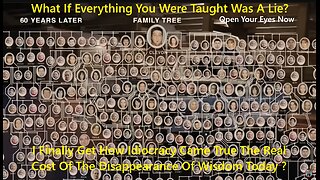 3:09
3:09
What If Everything You Were Taught Was A Lie?
17 days agoI Finally Get How Idiocracy Came To Be True The Real Cost Of The Disappearance Of Wisdom Today
2.29K2 -
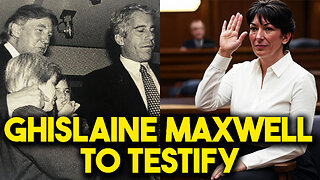
The Bubba Army
1 day agoGhislaine Maxwell to Testify! - Bubba the Love Sponge® Show | 7/24/25
31K5 -
 16:50
16:50
Chris From The 740
3 hours ago $0.42 earnedI Didn’t Expect to Like This Fan So Much – Ogery F11 Review!
10.8K1 -
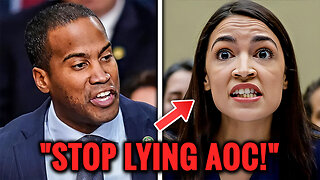 8:11
8:11
Millionaire Mentor
17 hours agoJohn James SHUTS DOWN AOC With One BRUTAL Sentence
22K23 -
 31:34
31:34
Friday Beers
16 hours ago $3.55 earnedOur Horrifying Night Drunk Ghost Hunting the Manson Murders
52.5K7 -
 4:09
4:09
Blackstone Griddles
15 hours agoEndless Summer Smashburgers on the Blackstone Griddle
23.5K5 -
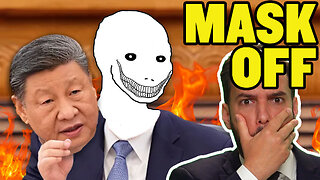 7:02
7:02
China Uncensored
17 hours agoWell, I Guess Now We Know...
20.1K23 -
 46:10
46:10
Members Club
20 hours ago $1.35 earnedThe WNBA Has Demands, TSA Loosens Up, and NYC Has a Whale Whisperer - MC04
16.8K6 -
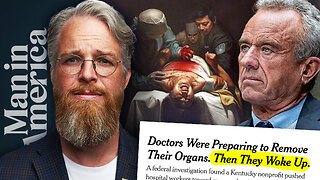 1:35:15
1:35:15
Man in America
16 hours ago🚨 ALERT: Hospitals in the U.S. Are KILLING Patients… for Their Organs!
92.3K46 -
 8:00
8:00
DropItLikeItsScott
17 hours ago $1.20 earnedIs This The BEST SIG P365? SIG P365 FUSE
13.4K